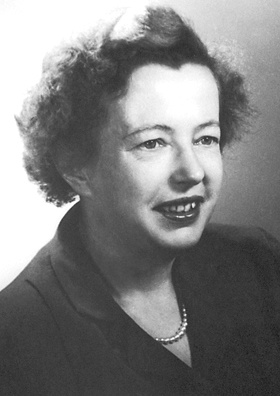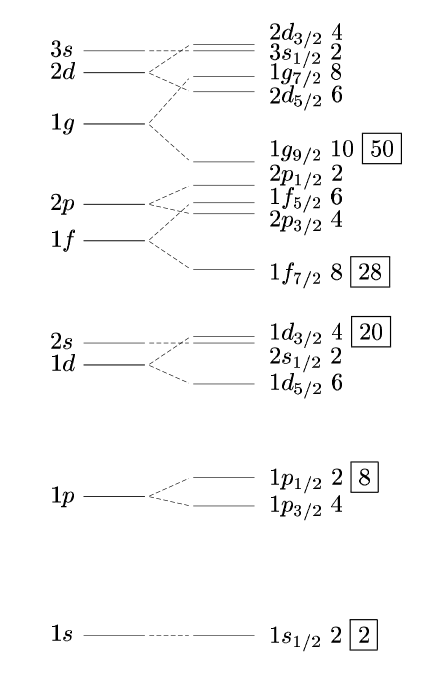
Maria Goeppert Mayer is best known for discovering the layered nature of atomic nuclei shell structure. She was also the second woman in history to win the Nobel Prize in Physics. Goeppert Mayer began her career in nuclear physics by famously protesting “But I don’t know anything about nuclear physics” — and ended up becoming a leading authority in the field.
Maria Goeppert Mayer: The Early Path to the Nobel Prize
Maria Goeppert Mayer (née Maria Goeppert) was born on June 28, 1906, in Kattowitz, Germany (now Katowice, Poland). Growing up, she was very close to her father, who was also a scientist. The family moved to Göttingen in 1910, as her father got a teaching position there, and Goeppert Mayer attended schools that prepared girls for higher education.
When she was 17, Goeppert Mayer took the university entrance exam a year early and passed with flying colors. She studied mathematics at the University of Göttingen but found herself drawn more toward the sciences. She decided to pursue a PhD in physics and began to study quantum mechanics, which was an up-and-coming field at the time. In 1930, she presented her doctoral thesis on two-photon absorption by atoms, with three Nobel Prize winners as her examiners.

Maria Goeppert Mayer. Image in the public domain, via Wikimedia Commons.
Around this time, Goeppert Mayer met her husband, Joseph Edward Mayer, who was also a scholar. They moved to the United States when he got a job at Johns Hopkins University. She wasn’t able to find a full-time position nearby, as regulations did not let her teach at the same university as Joseph and employment was scarce during the Great Depression. That did not deter her, however: Goeppert Mayer’s interest in physics led to all sorts of interesting work as a course lecturer and an assistant in the physics department, which gave her access to labs and other facilities that helped her research. She published a paper on double beta decay and struck up a collaborative relationship with Karl Herzfeld, writing papers together (with her husband sometimes joining in) on chemical physics topics like the color of organic molecules. In addition, she would go back to Germany during the summers, where she worked with one of her doctoral examiners on a scholarly article.
When Joseph moved to Columbia University, Goeppert Mayer went with him and was granted her own office (but no pay, unfortunately). Still, this space and presence in the school allowed her to continue her research and connect with other scientists. At the same time, she became a lecturer at Sarah Lawrence College.
The Magic Numbers of Nuclear Physics
After the war ended, Maria Goeppert Mayer was just getting started. Still searching for a way to have a physics career (and get paid for it), she moved to Chicago and taught at the University of Chicago on a volunteer basis. While she was there, the Argonne National Laboratory was founded close by. In 1946, she was offered a paying, part-time job as a senior physicist in the theoretical physics division. At first, she felt in over her head, admitting to having little knowledge in that particular branch of physics. This quickly changed, though, thanks to her background and her many discussions with physicists Edward Teller and Enrico Fermi.
In 1948, just 2 years into the position, she was investigating the source of elements and isotope stability. She noticed an interesting pattern: Nuclei that had certain numbers of protons or neutrons — 2, 8, 20, 28, 50, 82, and 126 — were much more stable than elements with other numbers. These “magic numbers” led her to develop the first mathematical model for nuclear shells in an atom. She showed that shell layers have different energy levels based on the number of protons and neutrons rotating around each other. The protons spin like dancers around their axis, and the neutrons orbit the center of the nucleus at each level.
At the same time and independent of her work, physicist J. Hans D. Jensen came to the same conclusion and developed a similar model for nuclear shell structure. They were jointly awarded Nobel Prize in 1963, sharing it with Eugene Paul Wigner for his work in nucleus and atomic particle theory.

Nuclear shells layered with the magic numbers in boxes. Image by Bakken — Own work. Licensed under CC BY-SA 3.0, via Wikimedia Commons.
Lasting Legacy and Achievements
Following Marie Curie, Maria Goeppert Mayer was the second woman to win a Nobel Prize in Physics and the first to win for theoretical physics. Her dream of teaching full-time finally became a reality too: In 1960, she became a full professor at the University of California, San Diego. She also received honorary degrees from Mount Holyoke College, Smith College, and Russell Sage College. In addition, she became a member of the National Academy of Sciences.
After her death, Goeppert Mayer was inducted into the National Women’s Hall of Fame. To this day, numerous awards and symposiums in her honor bring women in STEM together. She’s also been featured on a U.S. postage stamp and a crater on Venus is named after her.
In honor of her many contributions, let’s wish Maria Goeppert Mayer a happy birthday!
Further Reading
- Learn more about Maria Goeppert Mayer from these sources:
- Find out about other women in STEM:




Comments (1)
Ranzi Umberto
July 1, 2019Thank-you